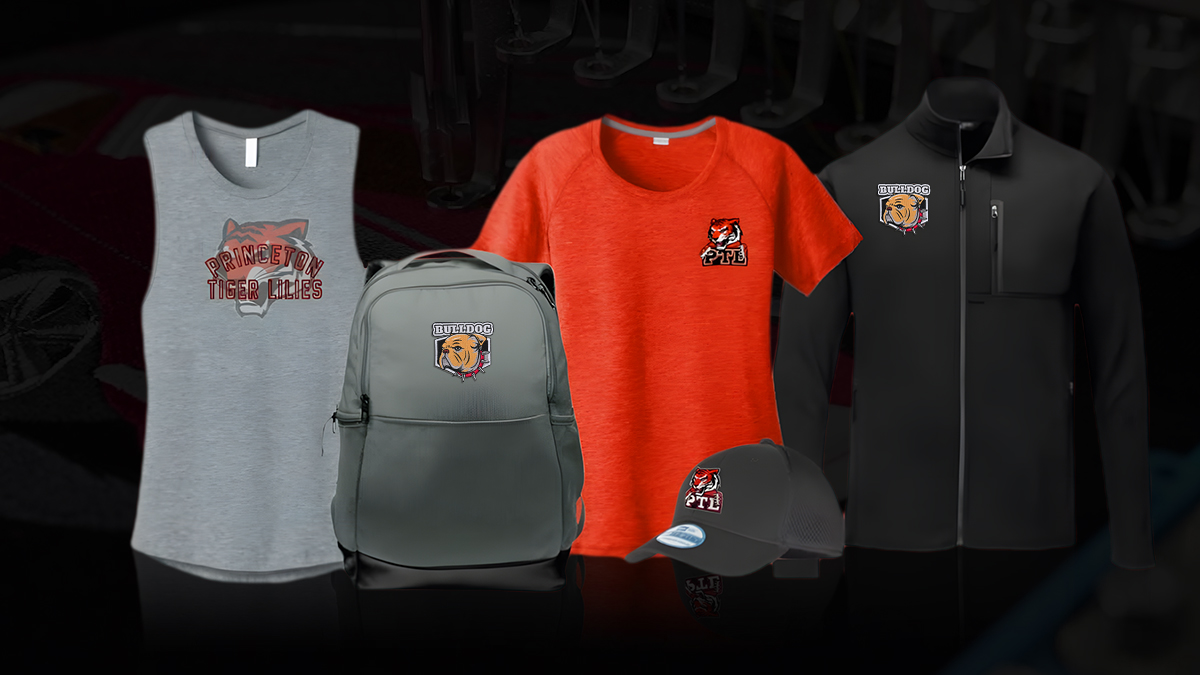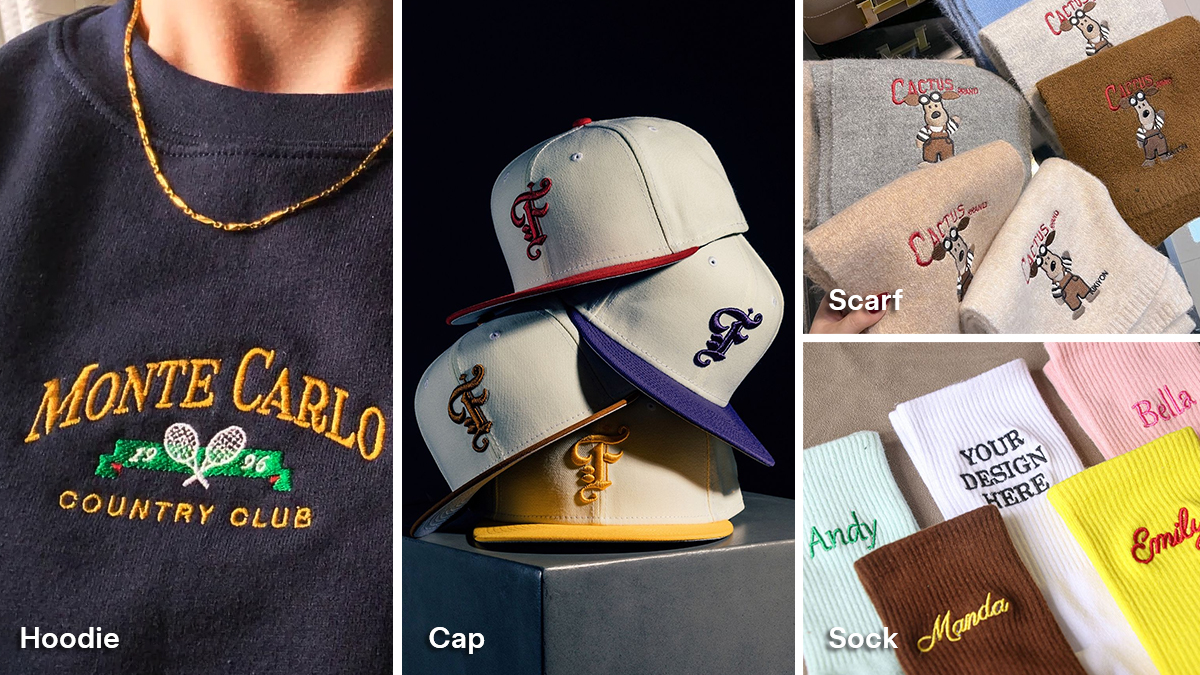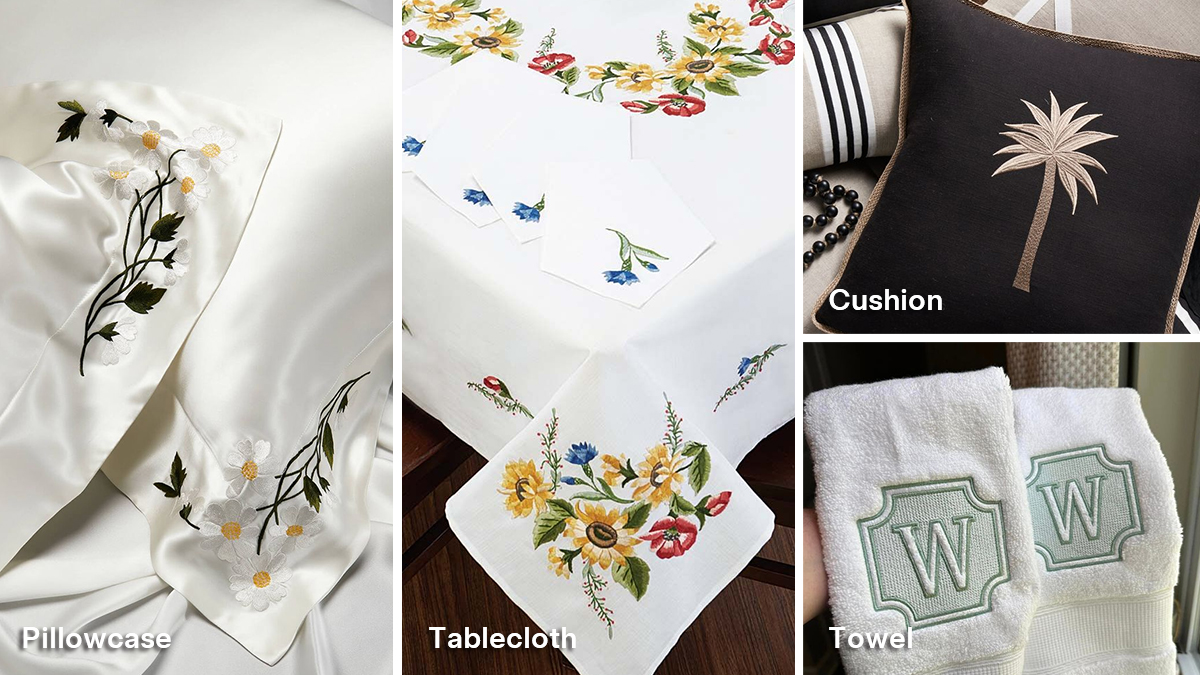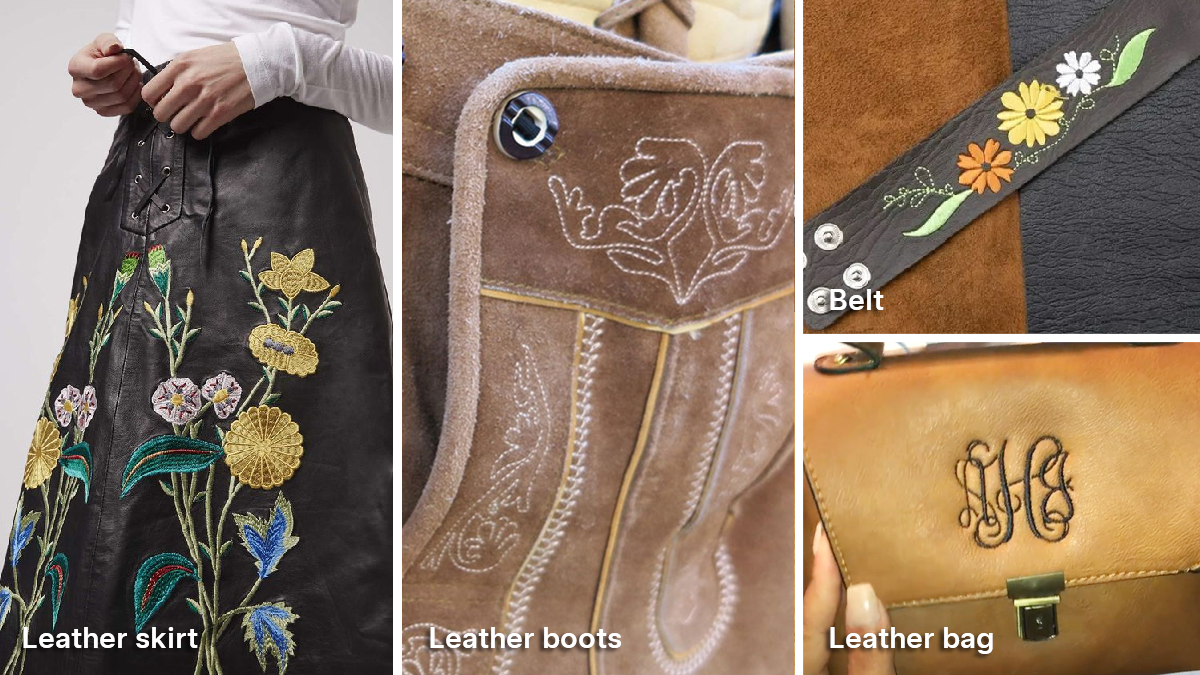How to Master the Selection and Use of Embroidery Adhesive
2025-01-10
Long Beach Expo wrapped up successfully!
2025-01-24EMBROIDERY TIPS
Some knowledge you should know about embroidery items
POSTED ON JANUARY 17th,2025 BY BAi

For embroidery enthusiasts, the creative process of embroidering on various materials and items can be incredibly exciting. In this article, we will explore what can be used as a canvas for embroidery and how to transform these items into unique and personalized works of art.
Below, we will list two main categories, including conventional and special categories. If you are interested, please continue reading below!
#1 Common Embroidery Items
-1 Fabric and Apparels
Fabric and Apparel: Fabric is one of the most common background materials for embroidery. You can choose from various types of fabric such as cotton, linen, canvas, denim, and velvet. These fabrics offer sufficient stability and density for embroidery.
In daily life, you can unleash your creativity by embroidering on garments made from these fabrics. You can choose to embroider on clothing, scarves, hats, socks, and other apparel and accessories, adding a unique style and personality to your personal wardrobe.

-2 Home Decor
Home decor plays a significant role in enhancing the aesthetic appeal of your living space. Embellished fabrics with exquisite embroidery are particularly noteworthy in this regard. They can be used to create curtains, curtain accessories, bedding items such as sheets, duvet covers, pillowcases, tablecloths, cushions, carpets, wall hangings, and more, adding beauty and warmth to your home environment.

-3 Toys
Toys: Embroidery on fabric can add a unique aesthetic and personalized touch to toys. This includes fabric dolls, stuffed toys, baby comfort toys, fabric books, plush animals, and more. Fabric is soft and safe, making it suitable for children to play with.
Embroidered dolls involve the application of embroidery techniques to add embroidered patterns or details to the doll's face, clothing, or other parts. Various colors of threads can be used for embroidery, creating a variety of intricate patterns and decorations.
Apart from directly embroidering the dolls themselves, you can also embroider the dolls' clothing and accessories, such as dresses, shoes, hats, scarves, and more. This adds a fashionable and personalized touch to the dolls.
-4 Backpacks
By embroidering on bags, you can add unique patterns, designs, or text to make them personalized and artistic. Various styles and types of bags are available, such as handbags, backpacks, wallets, clutches, and more. Choosing a high-quality bag suitable for embroidery is the first step in making embroidered bags. In addition to basic embroidery patterns, you can also add other decorations and details, such as beads, sequins, embroidery painting, etc., to add more charm.
-5 Paper
While embroidery is typically associated with textiles, you can also embroider on paper. This technique, known as paper embroidery, adds unique texture, patterns, and decorative effects to paper. It can be used to create greeting cards, bookmarks, decorative paintings, and other paper-based crafts.
Remember to choose paper with sufficient thickness and texture for embroidery to ensure it can withstand the stitching process. Suitable paper materials for embroidery include handmade paper, card stock, and watercolor paper.
When choosing embroidery backing materials, it's important to consider the embroidery technique and the complexity of the design. Some techniques may be more suitable for specific types of materials, while certain patterns may require materials with greater stability and density.
#2 Special Embroidery Items
In addition to common embroidery backing materials, there are also some special materials available for embroidery. These special materials can bring unique textures, effects, or themes to embroidered works. Here are some special embroidery backing materials.
-1 Leather
Leather is a material known for its durability and texture. By selecting the right type of leather, designing meticulously, and embroidering carefully, you can create exquisite leather accessories, bags, footwear, and other leather goods, showcasing your personal creativity and taste. However, it's important to note that leather items may require specific maintenance methods, such as using leather conditioner for maintenance and avoiding exposure to direct sunlight to prevent damage.

-2 Fabric Canvas
Canvas fabric is a special embroidery background material that resembles the texture of painting canvas. It often has texture and color, adding a unique artistic atmosphere to embroidery pieces.
-3 Water-soluble Backing Materials
Water-soluble background material can dissolve by water after embroidery is completed, allowing the embroidered lines to blend into the background, creating a delicate and transparent effect. This type of background material is commonly used in special embroidery techniques and designs.
These special embroidery background materials can help you create unique embroidery pieces, highlighting specific textures, effects, or themes. When choosing special materials, it's recommended to consider the requirements and design intentions of your embroidery project, and ensure that the materials are compatible with the embroidery threads and techniques you are using.
Embroidery, as an ancient and creative art form, continues to captivate with its timeless charming in modern society. Through the use of various materials and innovative techniques, embroidery continually breathes new life, becoming an integral part of contemporary fashion and art. Whether adorning garments, embellishing home decor, or crafting exquisite ornaments, embroidery bestows upon objects a unique artistic value and personalized flair. Overall, the application of embroidery is incredibly diverse; with imagination and creativity, virtually any item can serve as a canvas for embroidery. Therefore, let us unleash our imagination, explore the boundless possibilities of embroidery, and infuse our lives with more color and joy!
-1.png)
